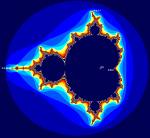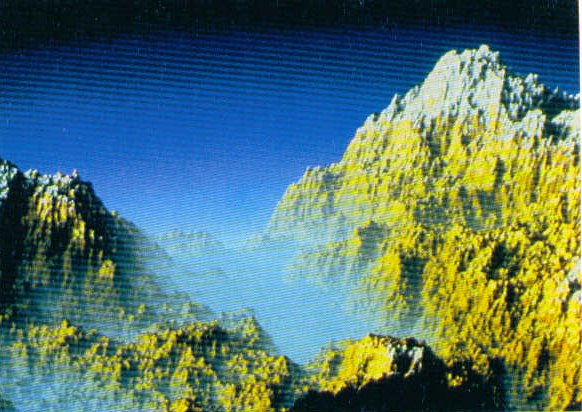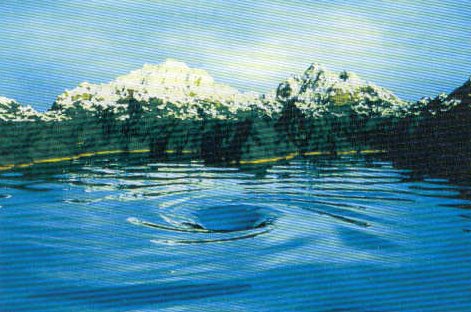A new paper by physicists Nassim Haramein and Elizabeth Rauscher shows the essential unity within nature. This is a very exciting development and gives concrete proof to the idea that the natural world did not evolve randomly; or, if it did, it was somehow guided toward wholeness and unity.
Before the development of chaos theory, science looked at the world as a sort of vast, sophisticated mechanical contrivance. It was thought that if one took this device apart, one could inspect and analyze the various components and arrive at a complete understanding of the whole. But that was before the work of Alan Turing, Edwin Lorenz, and Benoit Mandelbrot (the father of fractals). Lorenz was the discoverer of the famous "Butterfly Effect," which asserted that the wings of a butterfly in Brazil might influence the creation of a tornado in Texas. Lorenz came up with this idea in his study of weather patterns.
Lorenz found that a very simple mathematical equation, if fed back upon itself, could create very complex patterns that changed and evolved in wholly unpredictable ways. This was in direct contrast to the idea that a complex world must be the result of a very complex device, just as the time display on an old watch must contain a sophisticated set of interacting gears. But Lorenz showed that infinite complexity can result from a trivial set of instructions that even a child could understand, and that evolution could proceed along entirely different lines if one changed, even ever so slightly, one of the parameters of the instruction set.
The Mandelbrot Set, the most famous fractal of all time, is the result of this simple equation: z = z2 + c. That's it!

The other fractal landscape images are also mathematically generated.


(Images found in The Science of Fractal Images, Peitgen and Saupe, Springer-Verlag Press)
A Theory of Everything could, theoretically, be the result of some very simple set of conditions that could generate everything in the entire universe; a sort of elegant "Big Bang" that would contain within it a simple instruction set that could create the entire universe. The Hindu's have this idea; it is called the OM. The OM is said to be the fundamental universal vibration that contains all harmonics and sub-harmonics, and that which everything in existence resonates to.
To understand more about how this idea of complexity from simplicity came about, you can go to You Tube and see a very interesting 6-part video set from the BBC called "The Secret Life of Chaos." These videos explain the fascinating ideas and discoveries of the science of chaos theory in layman's terms, and are well worth watching.
Now we come to the discovery of Haramein and Rauscher, and their paper, SCALE UNIFICATION – A UNIVERSAL SCALING LAW FOR ORGANIZED MATTER
(Nassim Haramein, Michael Hyson, E. A. Rauscher)
It turns out that everything in the universe vibrates or resonates to a certain frequency. Galaxies, stars, atomic nuclei, and the human cell each have their own peculiar rate of vibration. The universe itself even has a fundamental vibrational frequency, which science has been able to measure. So what would happen if you collected the data about resonance rates and plotted them against size? In other words, if you went from lowest size (the Planck quantities, which are the basic energy quanta in the universe, and the atom) all the way up to the largest (the universe itself) and compared the frequencies, what would you find?
If the universe was simply a randomly evolved collection of matter and energy, you'd find no relationship at all. But if there was an underlying unity or wholeness, then there would be some sort of relationship. Haramein et al made a table, collecting the information:
size versus frequency table

When this information was plotted on a graph, it looks like this:
graph of frequency versus size

This is almost a straight-line relationship! At the top left of the graph is the "Big Bang" itself: a condition whereby all of the energy of the universe was crunched into a very tiny little ball, called a singularity. On the left side of the graph is the frequency, or rate of vibration, from highest at the top to lowest at the bottom. On the right side of the graph is the radius of the object, from lowest to highest. So the top left of the graph is the smallest object (the singularity from which the universe originated) which, understandably, has the highest rate of vibration. At the bottom right of the graph is the very largest object (marked "u" on the graph, for universe), which has the lowest frequency.
What Haramein hasn't shown in this graph is the position of the human cell. It is right in the middle of the graph, between A (atomic nuclei) and S (stellar)!
The human cell resonates at the frequency of about 10^11 Hz (cycles, or vibrations, per second). If you find "10" on the graph and draw a straight horizontal line to the slanted line on the graph, you'll see where the human cell is on the graph.
When the data points on this graph are analyzed, they demonstrate the Phi relationship. Phi is the Golden section, and has been called the "divine proportion" because so many of life's own forms are modeled on it. For instance, the relationship between the lengths of the finger joints is in Phi ratio, and so is the relationship between the hand, the forearm, and the upper arm; the foot, the lower leg and the upper leg; the distance between the top of the head and the nose, and the distance between the nose and the chin, etc. You can find a good explanation of Phi in the book by Gyorgy Doczi called "The Power of Limits." You can find this on Amazon, or just go to my website product page and click on the book link.
This paper demonstrates a remarkable result, because it not only shows the holistic relationship between matter and energy in the universe, but it places life at the very center of the process. We are the interface between the micro and the macro! And it all fits together beautifully.
Haramein and Rauscher didn't plot the biological data point in the center of the graph, because it would freak out the mainstream physics community. Physics, apparently, is not yet ready to accept the idea of the fundamental unity of spirit and matter. When human consciousness finally reaches this awareness – and it is not far off – our societies will transform. We simply will no longer be able to fight each other when it becomes obvious that we should be cooperating with each other!



